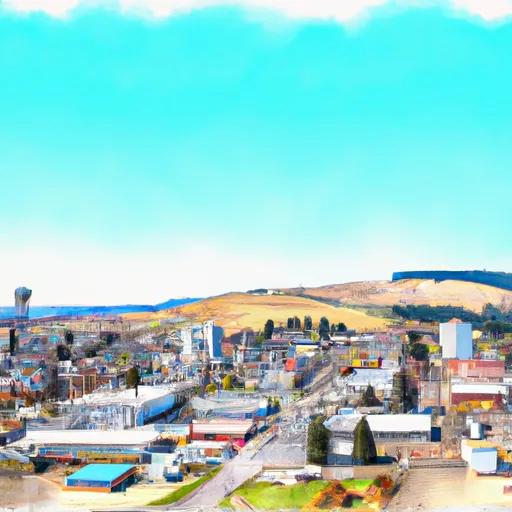-
 Snoflo Premium
Snoflo Premium
Get unlimited access to all our content
With no Ad interruptions! - Start Your Free Trial Login with existing account
Tonasket
Eden Index
Climate
7.5
•
Recreation
2.6
•
Community
•
Safeguard
3.9/10

Tonasket is a small town located in north-central Washington State, USA. It has a diverse climate with four distinct seasons. Summers are warm and dry, with temperatures ranging from the mid-70s to the mid-90s Fahrenheit (mid-20s to mid-30s Celsius). Winters are cold, with temperatures dropping down to the 20s Fahrenheit (-6 to -1 degree Celsius) and occasional snowfall.
The town is surrounded by natural beauty, situated near the Okanogan River and the Okanogan-Wenatchee National Forest. The hydrology constituents of Tonasket include the Okanogan River, which flows nearby, and several lakes, including Osoyoos Lake and Palmer Lake.
Outdoor enthusiasts will find a variety of recreational opportunities in Tonasket. The nearby national forest offers hiking trails, camping sites, and opportunities for fishing and hunting. The Okanogan River is popular for fishing and boating, with species like salmon and trout. Osoyoos Lake is known for water sports such as swimming, jet skiing, and paddleboarding. The area also has opportunities for wildlife viewing, birdwatching, and photography.
Overall, Tonasket provides a picturesque setting with its pleasant climate, various water bodies, and abundant outdoor recreation opportunities for nature enthusiasts.
What is the Eden Index?
The Snoflo Eden Index serves as a comprehensive rating system for regions, evaluating their desirability through a holistic assessment of climate health, outdoor recreation opportunities, and natural disaster risk, acknowledging the profound impact of these factors on livability and well-being.
Climate Health Indicator (CHI): 7.5
Tonasket receives approximately
396mm of rain per year,
with humidity levels near 74%
and air temperatures averaging around
7°C.
Tonasket has a plant hardyness factor of
6, meaning
plants and agriculture in this region thrive during a short period during spring and early summer. Most
plants will die off during the colder winter months.
By considering the ideal temperature range, reliable water supplies, clean air, and stable seasonal rain or snowpacks, the Climate Health Indicator (CHI) underscores the significance of a healthy climate as the foundation for quality living.
A healthy climate is paramount for ensuring a high quality of life and livability in a region, fostering both physical well-being and environmental harmony. This can be characterized by ideal temperatures, reliable access to water supplies, clean air, and consistent seasonal rain or snowpacks.
Weather Forecast
Streamflow Conditions
Upper Columbia
Area Rivers
Upper Columbia
Snowpack Depths
Upper Columbia
Reservoir Storage Capacity
Upper Columbia
Groundwater Levels
Recreational Opportunity Index (ROI): 2.6
The Recreational Opportunity Index (ROI) recognizes the value of outdoor recreational options, such as parks, hiking trails, camping sites, and fishing spots, while acknowledging that climate plays a pivotal role in ensuring the comfort and consistency of these experiences.
Access to outdoor recreational opportunities, encompassing activities such as parks, hiking, camping, and fishing, is crucial for overall well-being, and the climate plays a pivotal role in enabling and enhancing these experiences, ensuring that individuals can engage in nature-based activities comfortably and consistently.
Camping Areas
| Campground | Campsites | Reservations | Toilets | Showers | Elevation |
|---|---|---|---|---|---|
| Crawfish Lake | 25 | 4,523 ft | |||
| Aeneas Lake - WDFW | None | 1,397 ft | |||
| Ell Lake - WDFW | None | 2,615 ft | |||
| Carl Precht RV Park | 72 | 842 ft | |||
| Round Lake - WDFW | None | 2,619 ft | |||
| Osoyoos Lake Park | None | 913 ft | |||
| Long Lake (Tonasket) - WDFW | None | 2,616 ft |
Nearby Fishing
Nearby Ski Areas
Catastrophe Safeguard Index (CSI):
The Catastrophe Safeguard Index (CSI) recognizes that natural disaster risk, encompassing floods, fires, hurricanes, and tornadoes, can drastically affect safety and the overall appeal of an area.
The level of natural disaster risk in a region significantly affects safety and the overall livability, with climate change amplifying these risks by potentially increasing the frequency and intensity of events like floods, fires, hurricanes, and tornadoes, thereby posing substantial challenges to community resilience and well-being.
Community Resilience Indicator (CRI):
The Community Resilience Indicator (CRI) recognizes that education, healthcare, and socioeconomics are crucial to the well-being of a region. The CRI acknowledges the profound impact of these elements on residents' overall quality of life. By evaluating educational resources, healthcare accessibility, and economic inclusivity, the index captures the essential aspects that contribute to a thriving community, fostering resident satisfaction, equity, and social cohesion.

